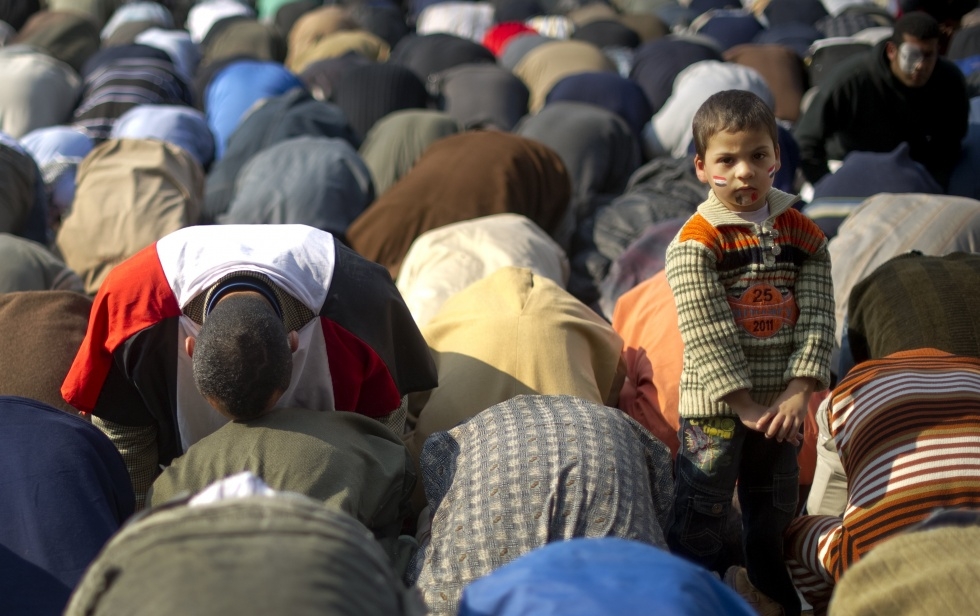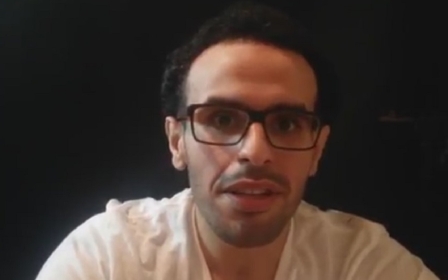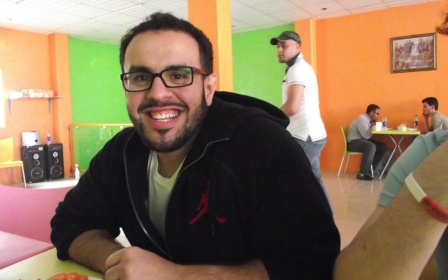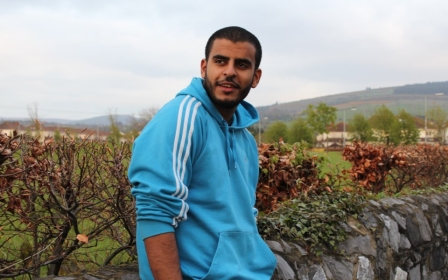Inside Egypt's El-Marg juvenile detention centre

Egypt’s crackdown on protestors has been well reported by the media. However, what goes largely uncovered is the uptick in minors who are also being arrested during demonstrations. According to Maha Maamoun, a child’s rights activist, of 1,000 arrests on 25 January, 180 were under the age of 18.
Ahmed Moselhy, a lawyer at the Egyptian Foundation for Advancement of Childhood Conditions (EFACC) and who specializes in minors’ cases, said that, “Between August 2013 and March 2014, over 600 minors were arrested during protests in Cairo and Alexandria alone.” Notably, parents are never notified of their child’s arrest, and many “spend days or even weeks searching police stations in order to locate their child,” said Moselhy.
The minors are detained alongside adults in police stations and prisons - ostensibly due to a lack of space and resources. Some minors are eventually sent onwards to El-Marg juvenile detention centre. The detention centre holds boys 15-19 years old (and in special cases up to 21). The capacity of the detention centre is 700, but according to Maamoun, the current number of detainees “exceeds 1,200.”
Most of these detainee end up at El-Marg, a detention centre that has become notorious for its harsh conditions and intra-detainee abuse.
“It’s probably better for the children to be detained in (adult) prisons or police stations, bc everyone who goes to the juvenile detention centre gets violated -it’s much harder in the juvenile centre,” said Maamoun.
Political arrests of minors
Two minors interviewed were arrested for political reasons, on separate occasions, their time in El-Marg overlapped, but they never met each other inside, nor outside the centre.
Ahmed was arrested when he was 17 years old, in November 2013 during a protest in Giza. The police arrested seven people at the protest, three of whom were minors, and sent them to Omra Neya police station. Ahmed would later spend one month in the Giza police station, two months in Omra Neya, and two months in El-Marg. There are 14 charges being brought against him, including: belonging to the Muslim Brotherhood, terrorism, protesting without permission, attempting to bring down the state, damaging property, and possessing weapons.
Mohammed was 15 years old when he was arrested in the garden of the Opera House on 15 January. He was one of 30 attendees at an Ultras meeting to distribute new scarves for the members. Mohammed was sent to Azbikeya police station for two days, Darb al-Akhmar for 7 days, Kasr el Nil for a day, and El-Marg for 28 days. He is facing 13 charges - similar to those of Ahmed.
Mohammed was on the receiving end of serious abuse during interrogation by National Security investigators inside of Azbikeya. He was beaten, kicked in the back and legs, hit with drum sticks, electrocuted in his neck, behind his ears, the sides of his torso, and genitals. Later on, he said his wrists were bound with plastic ties and he was suspended to the bars of the cell door in the prison. “I was completely naked and blindfolded. They started throwing buckets of cold water on us.”
Significantly, Mohammed views El-Marg as the worst of his experience being detained, “El-Marg was the hardest to stay in - in Azbikeya and other police stations we know we’ll be beaten, but in El-Marg, the torture is constant,” he said.
Inside el-Marg, abuse from the management itself is minimal. Rather, the administration have established a system whereby older detainees govern the newer detainees. The centre itself is physically divided into “ombers” - large rooms where the boys spend most of their days and where they sleep -essentially the cells of the centre. Each omber is then managed by a group of around 23 older detainees. This “system” is lead by the “president,” who has two assistants. Below the president’s assistants is a “minister of officers,” who is in charge of directing 20 “officers.” “The officers, are charged with watching the other detainees of the omber and carrying out punishments on the ‘dowraya’ (the regular detainees that are not in the ‘system’) if they make ‘mistakes,’” explained Mohammed.
The 'welcome party'
On 28 January, Ahmed and the two other minors in his case were transferred from Omra Neya station to el-Marg. Once there, they were taken into the “welcome omber.” “Each of us were grabbed by the back of our neck and shoved into the room - later I would find out that these were the ‘officers’ of our omber,” said Ahmed. The officers told the boys to stand completely straight, staring up at the ceiling, with their arms at their sides. “They made us strip down to our underwear and they searched through our clothing. After, they told me to take off my underwear and told me to open my legs and squat up and down four times.”
The detainees were then told the rules of El-Marg. “The ‘president’ showed us a large wooden pole covered in a plastic casing,” explained Mohammed. “He told us, ‘Here, it is yes sir - and that’s it. Those who don’t listen will be beaten by this pole.’ Then he began to hit all of the new detainees with the stick.” According to Mohammed, they were told that if any boy told their family during visitations what took place inside they’d be “punished in the worst way.”
Both boys stated that after the explanation of the rules, the detainees were made to sit on the edge of a bed, next to four other boys. “We had to sit with our backs very straight, our heads facing the ceiling and our finger tips touching our knees,” said Mohammed as he demonstrated the position. “Later on, they forced us to stay in this position for up to six hours at a time,” said Ahmed.
“Officially there should be a maximum of 70 boys per omber,” said Moselhy. In Ahmed’s welcome omber there were 90 detainees and Mohammed estimates there were 180 boys when he passed through. Both boys said once they transferred, their permanent ombers held around 90 boys each.
Routine abuse
The detainees are woken up at 4 am. The officers lift their heads up and let them drop in order to wake them up - if this doesn’t work, they kick them in the stomachs or backs to wake them. Ten detainees are then chosen to wash the floor, using a small piece of cloth, “just big enough for the tips of the fingers,” said Ahmed, while the assistant to the president oversees them.
“After, we do military-styled training outside for half an hour,” explained Mohammed, “We are made to march and do some exercises.” “They are ridiculous exercises to break our self-esteem,” said Ahmed. Breakfast is served at 9 am. Followed by visitation hours until 11 am. Each detainee is permitted one visitation day per week. Lunch is served in the afternoon, followed by a period for cleaning, and then studying.
Dinner comes at 7 pm. “We are all made to line up, then told to turn around with our arms outstretched. Then, the officers tell us, ‘omber go down’ and we all have to put our hand to our knees and balance on our toes for five minutes.” The trays of food are then put on the floor in front of the detainees. “There was one tray of food for every three boys - in my welcome omber it was one tray for every six boys,” said Ahmed, adding, “We have five minutes maximum to eat.”
The time in between meals is usually filled with “punishment sitting.” However, discomfort methods are diverse and inventive. “Ride the wall” involves being in an inclined push-up position, with a boy’s legs up against the wall, and his hands on the floor. Another routine position has the boys with their foreheads against the wall, with their legs back, so all their weight rests on their foreheads. “We stay in those positions for five minutes,” said Ahmed.
Punishment trials
According to Moselhy, juvenile counselors are supposed to stay and watch over the omber during the night, but they never do - instead, they leave the “leaders” in charge. According to both Ahmed and Mohammed, the omber doors are shut and at 9:30 pm, and a “punishment trial” run by the internal system to “correct mistakes” of the dowraya ensues. Because the boys must ask the leaders for permission to do anything, “to speak, to stand, to move, to even scratch your arm,” explains Ahmed, ‘mistakes’ can range from not asking permission, to as little as smiling.
“The president asks the officers who has made mistakes throughout the day,” said Ahmed. “Those who made ‘mistakes’ must stand in a line and hold their hands palms-up, or they make us lie on a bed, and officers take a wooden stick and hit the palms of our hands or the bottom of our feet - sometimes they knee us in the stomach or punch us in the back of the head and the back.”
Committing multiple mistakes during the day results in having a detainee “punched and beaten by the president and two assistants all at once,” said Ahmed. “If you are caught talking about what goes on in your omber with someone from outside that omber, the leaders will make you kneel with your legs apart, your hands clasped behind your back, and your head down, shoulders rounded, for hours on end.”
According to Moselhy, all 400 detainees that EFACC had interviewed in the past 8 months claimed they had been physically abused in the centre. He added that sexual abuse is rife amongst the detainees, and that of those he interviewed, “25% say they have been forced to have sex by another detainee.” Mohammed said that he witnessed the “leaders” and “officers” engaging in sexual activity with the other detainees. He continued stating that, more than once, “other boys would rub their penises against me to the point of ejaculation.”
Dire conditions
Beyond the peer-to-peer punishment, conditions inside the detention centre are dire. “The centre has rehabilitation workshops, cinemas, a football field, and a health services area, but all of these places are closed down and locked up,” said Moselhy. There are no rehabilitation or schooling programs onsite. The detainees can read their textbooks from school for around an hour a day, but there are no formal classes or instructors.
“They are living in very unhygienic conditions,” said Maamoun. “There are a lot of skin diseases because it is so crowded and hot.” There is one doctor available for all of the detainees, and is supposed to be onsite during the day, but according to Mohammed, the doctor was rarely present at the centre. “I had stomach problems and asked to see the doctor. The management told me maybe tomorrow, but in the ten days I was sick I never saw the doctor nor received any medication. I had to continue doing training and cleaning as normal.”
According to Moselhy, there is supposed to be one juvenile counsellor for every five minors in the centre. Currently, he said there are 27 counsellors working with 1,200 children. “Children never get counselling because there isn’t the capacity.” When asked, Ahmed and Mohammed said that they received no counselling at any point from juvenile counsellors, whilst in El-Marg.
Gaps in child law on paper vs practice
According to both Maamoun and Moselhy, the Egyptian Child Law is thorough and in theory, quite good. “The problem is that it isn’t put into practice,” said Maamoun. The Child’s Law states that children are supposed to be investigated “as soon as possible” - but there is no concrete amount of time, and thus investigations can go on for months and months.
“36 of the children arrested at protests have been inside (El-Marg) for a year, and are still considered ‘under investigation.’” Moreover, “Prosecutors utilize a loophole under the Punishment Law that says if a minor is affiliated in a crime with an adult, they can be tried as an adult. “So, investigations can take up to two years,” explained Moselhy.
In Moselhy’s view, the major problem with the state of the juvenile justice system in Egypt is that there is a lack of consideration of minors as minors. “There are prosecutors who specialize in dealing with children, but no specialized judges. This makes a big difference. They just see the children as criminals and don’t judge them differently than if they were adults,” said Moselhy adding, “We need to deal with children as children, not as problems.”
Middle East Eye propose une couverture et une analyse indépendantes et incomparables du Moyen-Orient, de l’Afrique du Nord et d’autres régions du monde. Pour en savoir plus sur la reprise de ce contenu et les frais qui s’appliquent, veuillez remplir ce formulaire [en anglais]. Pour en savoir plus sur MEE, cliquez ici [en anglais].




